[This note covers all of the "Thomas Alva Edison Correspondence" folders in Series I.]
These documents cover the years 1862-1931, with one additional item from 1937. They consist primarily of letters to and from Edison. They relate to a variety of subjects, including telegraphy, phonographs, telephones, electrical lighting, alkaline storage batteries, and motion pictures. Some of the letters from the 1920s discuss Edison's experiments in producing rubber from plants, his attitude toward the radio, and his skepticism about its use in transmitting music. There is also correspondence concerning Henry Ford's automobiles, his profit-sharing plans, and his antisemitism. Some of the letters deal with Edison's summer camping trips with Ford, naturalist John Burroughs, and rubber manufacturer Harvey S. Firestone. Other items of a personal nature include correspondence about Edison's health and his opinions on cigarette smoking and prohibition, along with jokes and birthday greetings exchanged between Edison and Ford. A few letters pertain to the re-creation of the Menlo Park laboratory at Greenfield Village in Dearborn, Michigan.
In addition, there is some non-correspondence, including a 13-page account of the "beginnings of the incandescent lamp and lighting systems," prepared by Edison for Henry Ford in 1926. Also included are Edison's penciled responses to handwritten and typewritten questions submitted by reporters in 1929. The questions address topics such as capital punishment, airplane travel, religion, moral standards of the young, fashion trends, television experiments, crime reporting in newspapers, prohibition, and economic prosperity during Herbert Hoover's presidential administration.
Among the correspondents are Edison and his parents, Samuel and Mary Edison; Joel H. Hills and William E. Plummer, financiers of Edison's early experiments in telegraphy; Samuel Insull, Edison's personal secretary during the 1880s, and William H. Meadowcroft, his personal assistant from 1910 to 1931; laboratory assistants Francis Jehl, John F. Ott, and Charles N. Wurth; and Thomas Logan, superintendent of the machine shop in the Menlo Park laboratory. Other correspondents include Ford and his personal secretaries Frank Campsall and Ernest G. Liebold; William C. Anderson, manufacturer of electric automobiles; William G. Bee, vice-president of the Edison Storage Battery Co.; and William A. Benney, research superintendent at Edison's winter home in Fort Myers, Florida, during the 1920s.
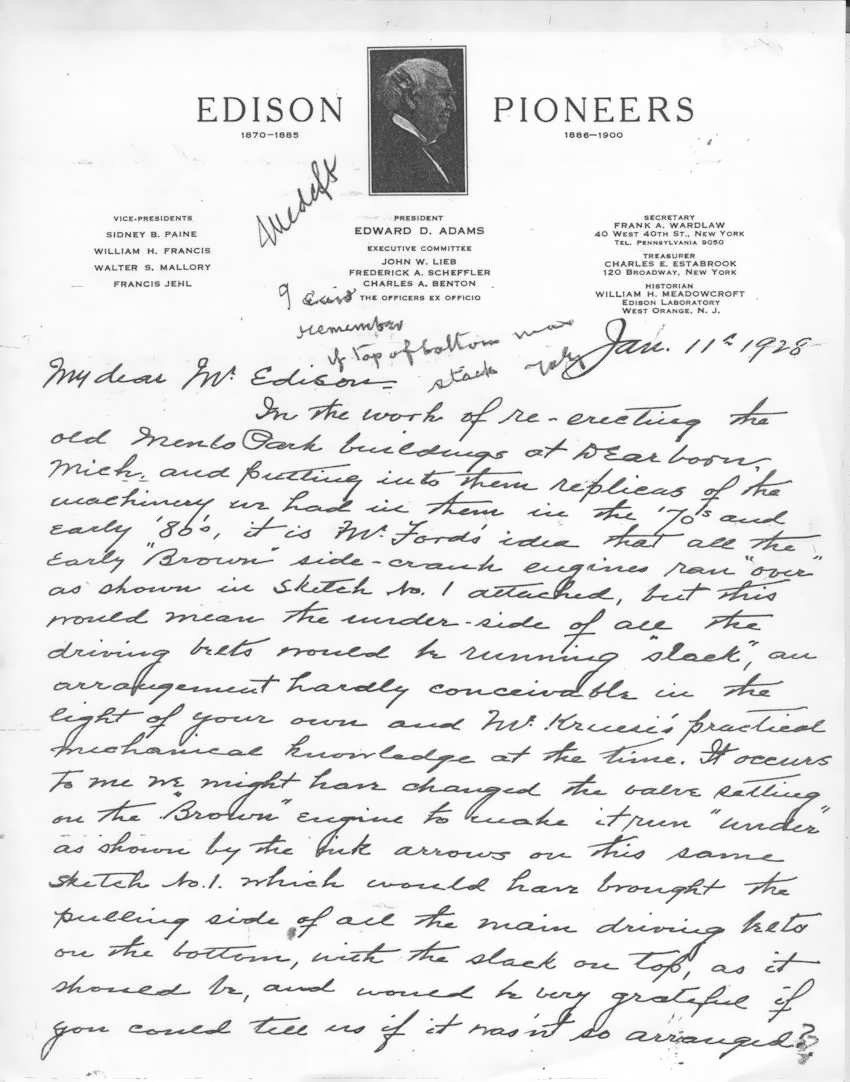 [X001A5AA], Letter from Frank Andrew Wardlaw to Thomas Alva Edison, January 11th, 1928 1928-01-11
[X001A5AA], Letter from Frank Andrew Wardlaw to Thomas Alva Edison, January 11th, 1928 1928-01-11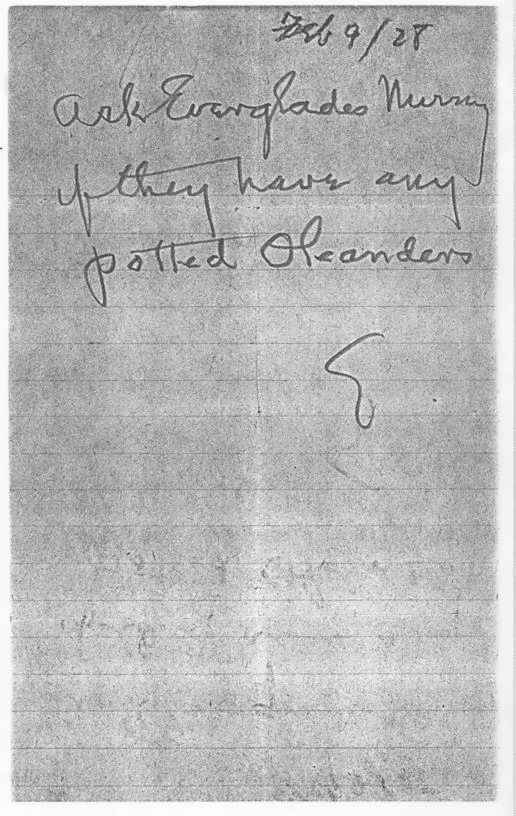 [X001A5AB], Letter from Thomas Alva Edison to William Albert Benney, February 9th, 1928 1928-02-09
[X001A5AB], Letter from Thomas Alva Edison to William Albert Benney, February 9th, 1928 1928-02-09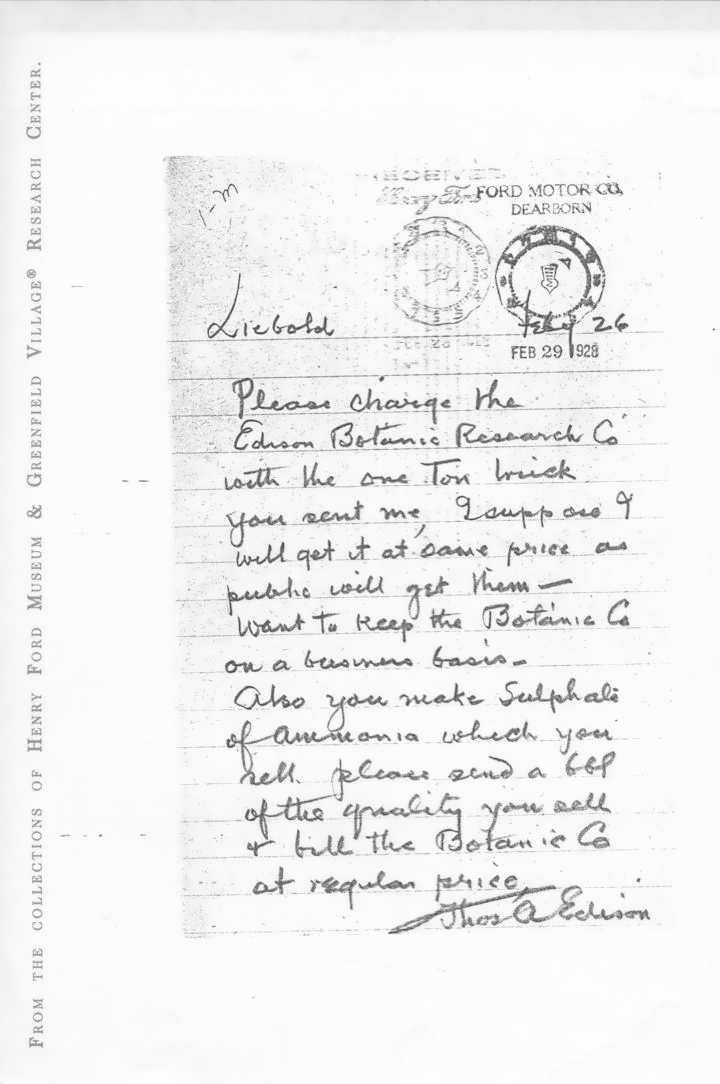 [X001A5AC], Letter from Thomas Alva Edison to Ernest Gustav Liebold, February 26th, 1928 1928-02-26
[X001A5AC], Letter from Thomas Alva Edison to Ernest Gustav Liebold, February 26th, 1928 1928-02-26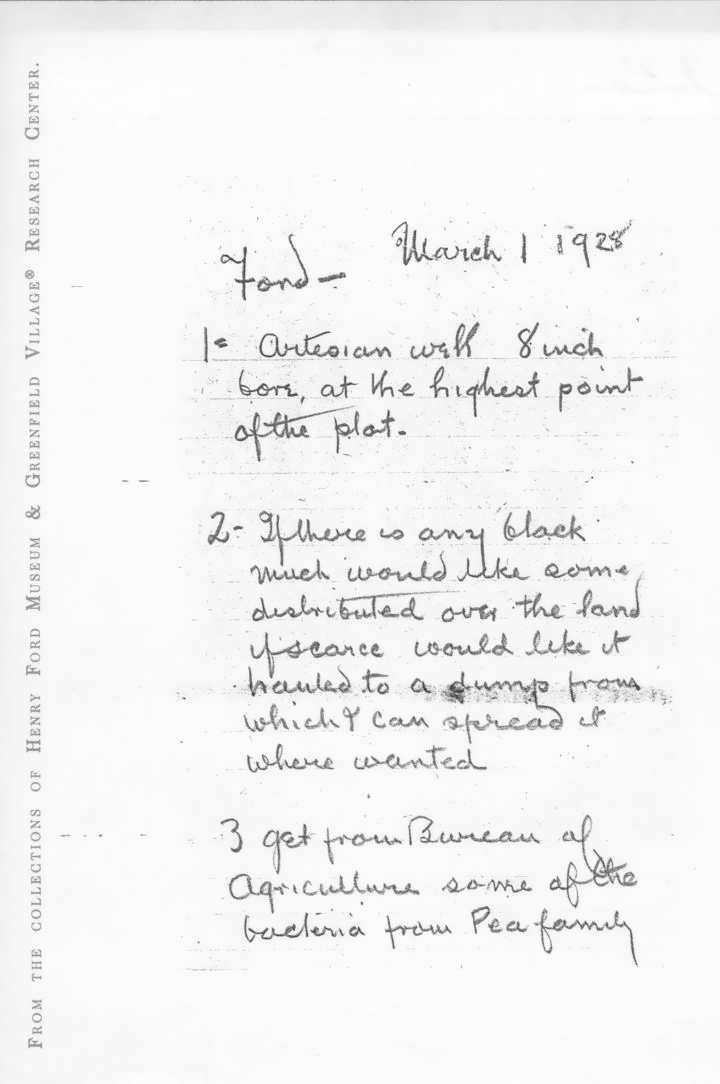 [X001A5AD], Letter from Thomas Alva Edison to Henry Ford, March 1st, 1928 1928-03-01
[X001A5AD], Letter from Thomas Alva Edison to Henry Ford, March 1st, 1928 1928-03-01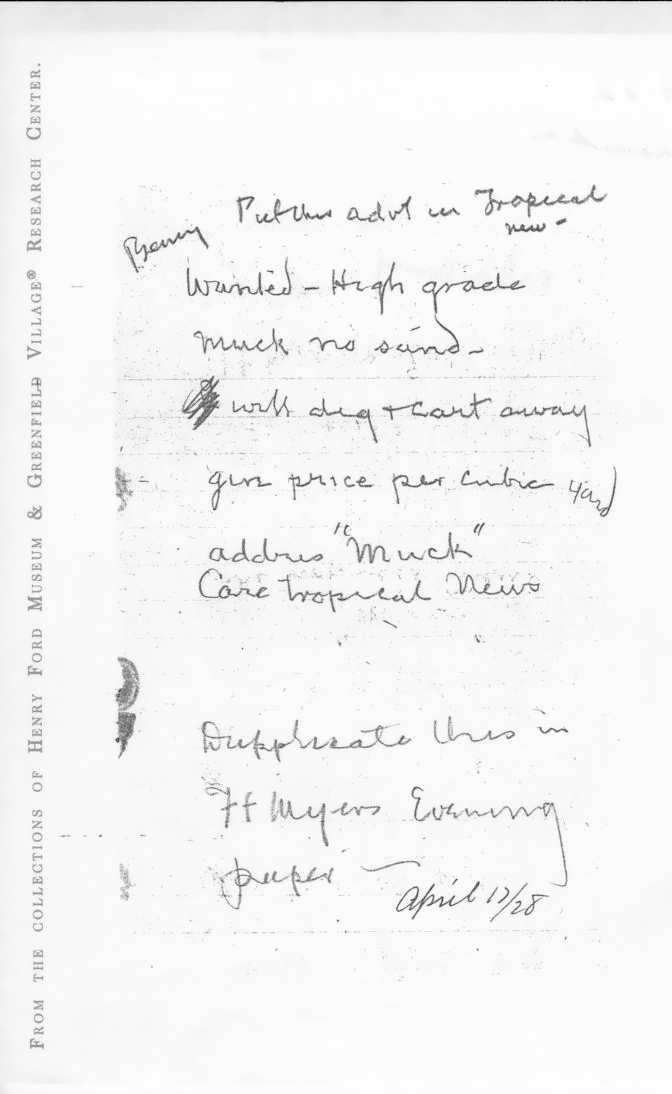 [X001A5AE], Letter from Thomas Alva Edison to William Albert Benney, April 17th, 1928 1928-04-17
[X001A5AE], Letter from Thomas Alva Edison to William Albert Benney, April 17th, 1928 1928-04-17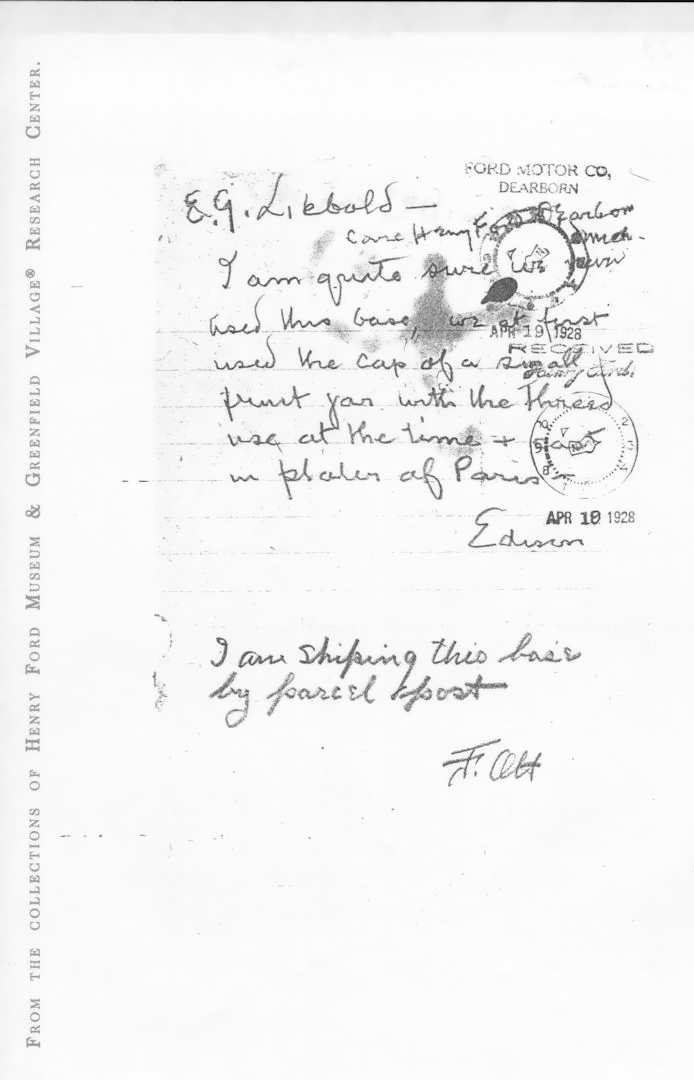 [X001A5AF], Letter from Thomas Alva Edison to Ernest Gustav Liebold, April 17th, 1928 1928-04-17
[X001A5AF], Letter from Thomas Alva Edison to Ernest Gustav Liebold, April 17th, 1928 1928-04-17 [X001A5AG], Letter from Thomas Alva Edison to William Albert Benney, April 25th, 1928 1928-04-25
[X001A5AG], Letter from Thomas Alva Edison to William Albert Benney, April 25th, 1928 1928-04-25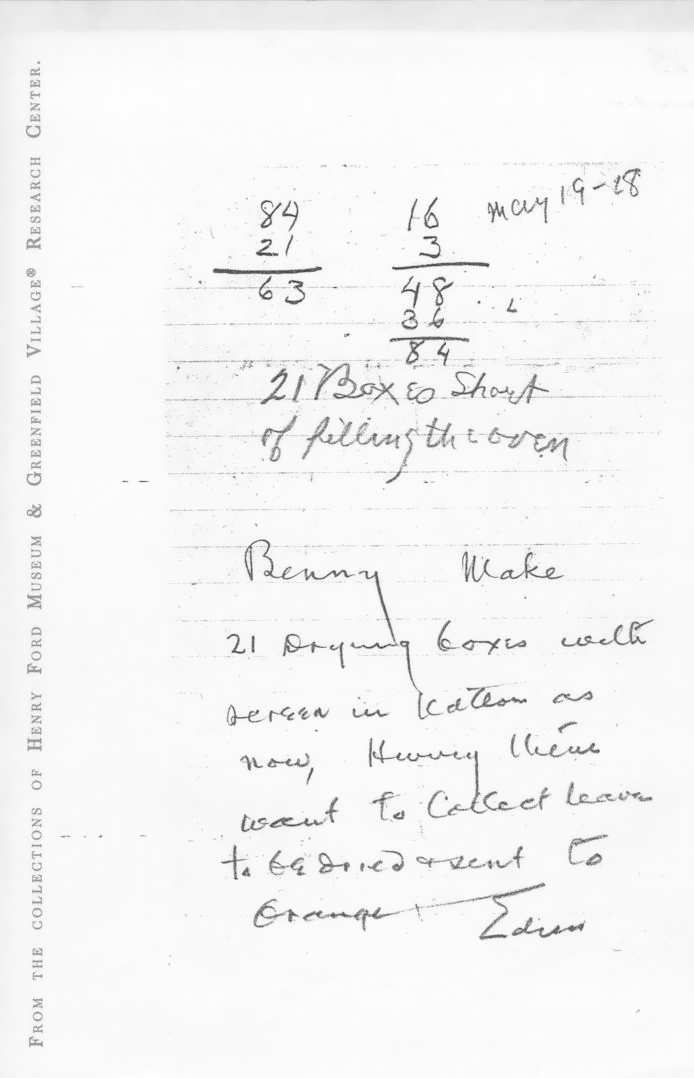 [X001A5AH], Letter from Thomas Alva Edison to William Albert Benney, May 19th, 1928 1928-05-19
[X001A5AH], Letter from Thomas Alva Edison to William Albert Benney, May 19th, 1928 1928-05-19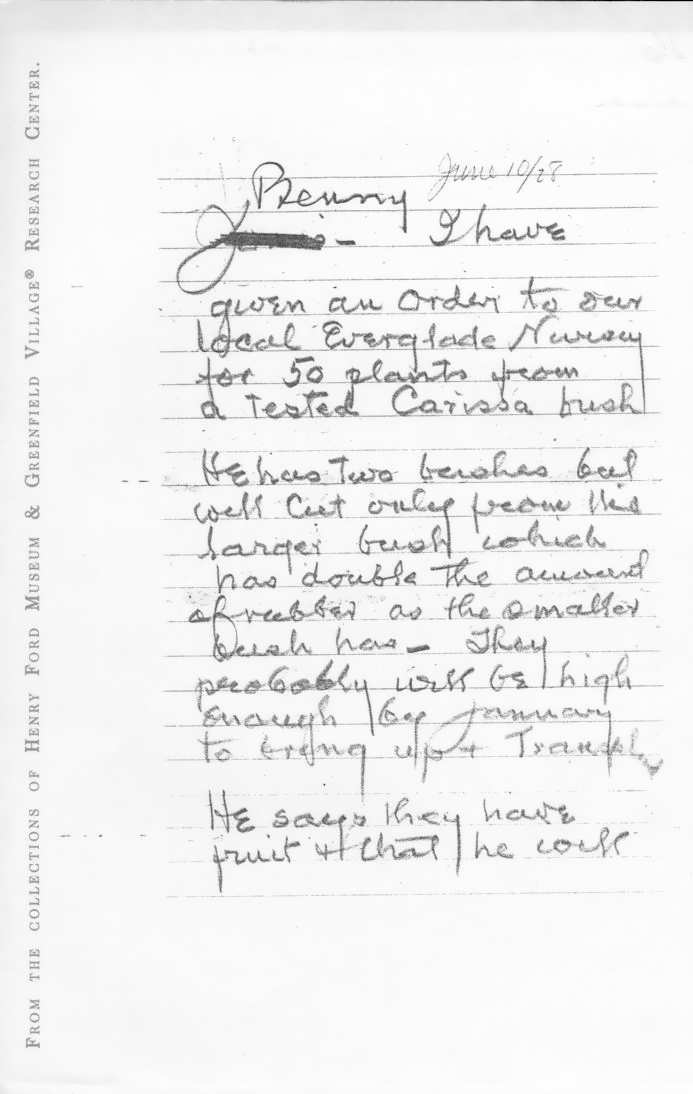 [X001A5AI], Letter from Thomas Alva Edison to William Albert Benney, June 10th, 1928 1928-06-10
[X001A5AI], Letter from Thomas Alva Edison to William Albert Benney, June 10th, 1928 1928-06-10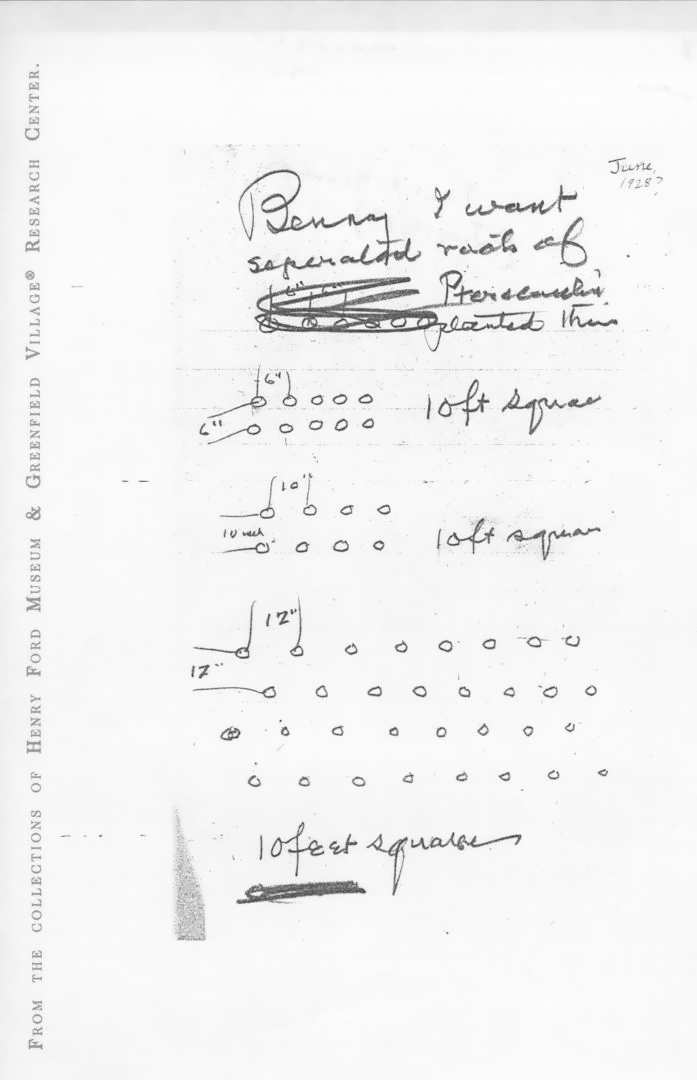 [X001A5AJ], Letter from Thomas Alva Edison to William Albert Benney, June 1928 1928-06-00
[X001A5AJ], Letter from Thomas Alva Edison to William Albert Benney, June 1928 1928-06-00 [X001A5AK], Letter from Henry Ford to Thomas Alva Edison, July 30th, 1928 1928-07-30
[X001A5AK], Letter from Henry Ford to Thomas Alva Edison, July 30th, 1928 1928-07-30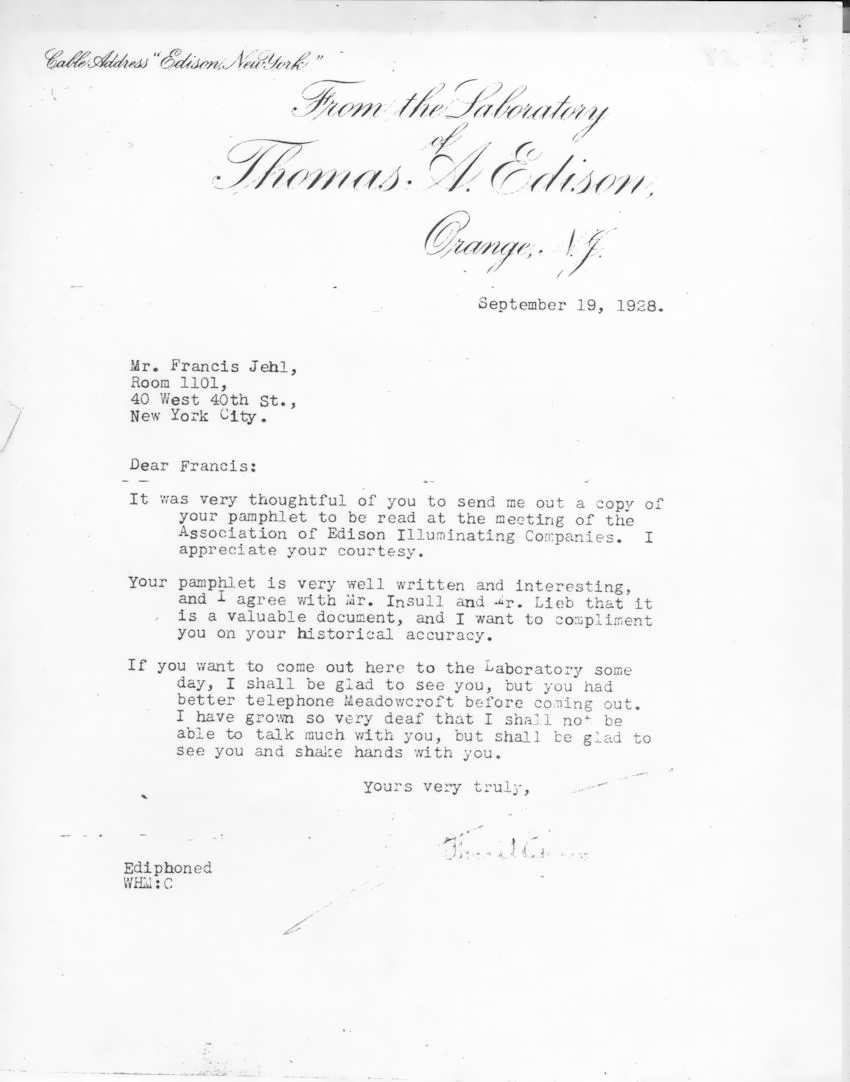 [X001A5AL], Letter from Thomas Alva Edison to Francis Jehl, September 19th, 1928 1928-09-19
[X001A5AL], Letter from Thomas Alva Edison to Francis Jehl, September 19th, 1928 1928-09-19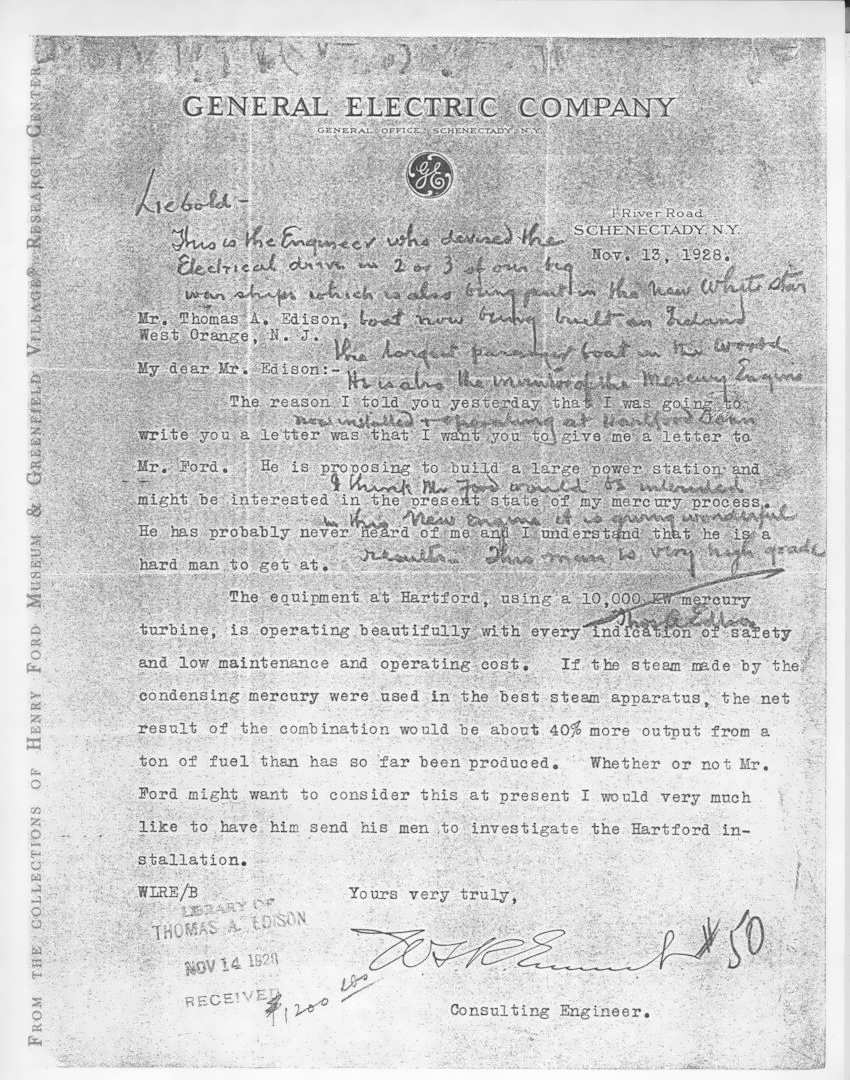 [X001A5AM], Letter from W T R Ernest to Thomas Alva Edison, November 13th, 1928 1928-11-13
[X001A5AM], Letter from W T R Ernest to Thomas Alva Edison, November 13th, 1928 1928-11-13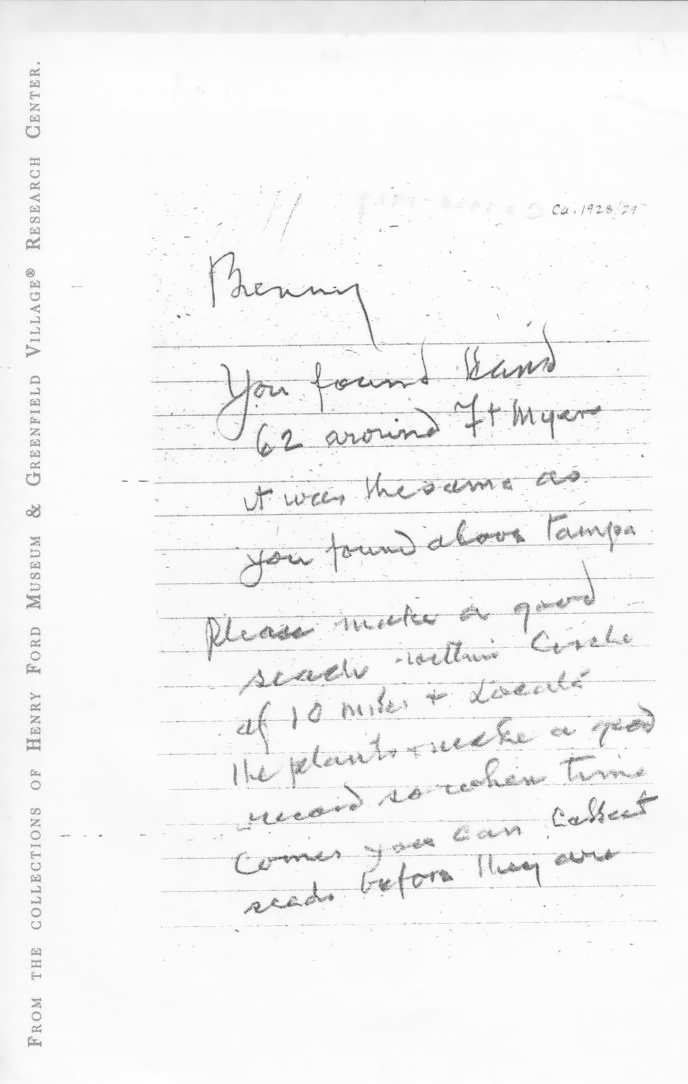 [X001A5AN] Letter, 1928-1929 1928-1929
[X001A5AN] Letter, 1928-1929 1928-1929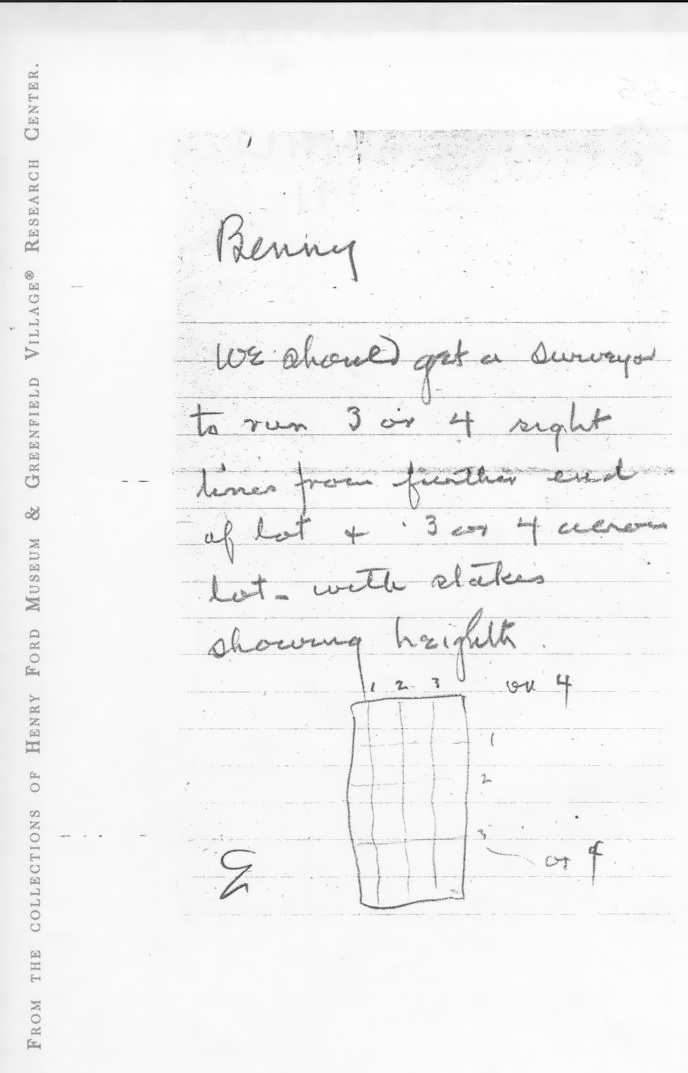 [X001A5AO] Letter, 1928-1929 1928-1929
[X001A5AO] Letter, 1928-1929 1928-1929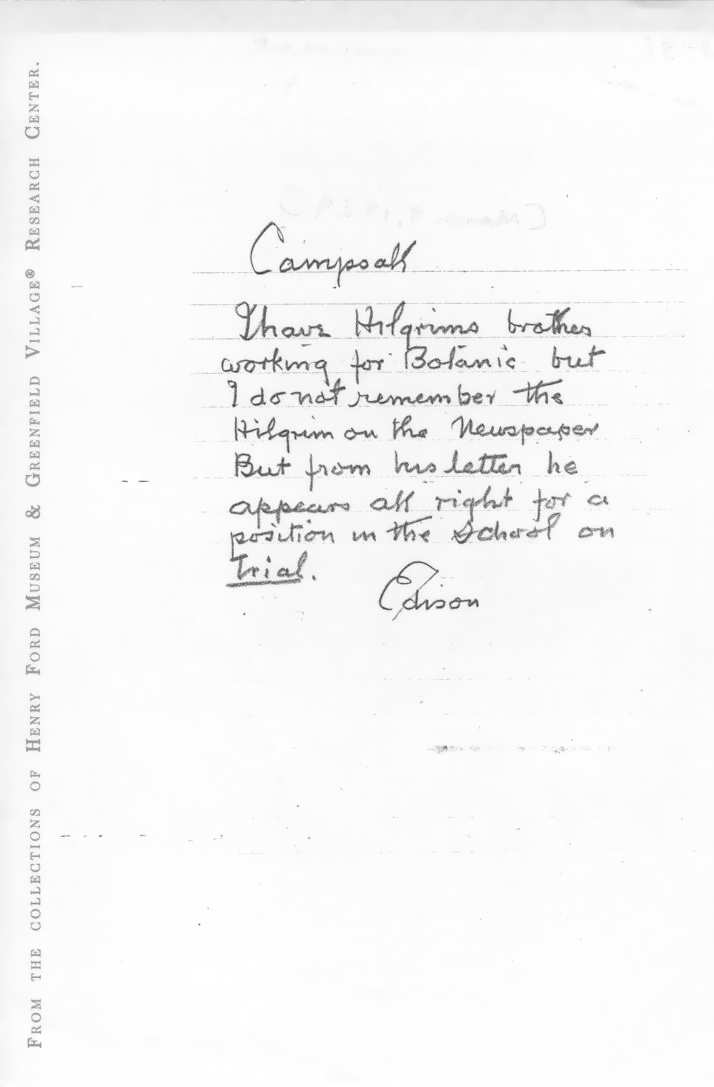 [X001A5AP], Letter from Thomas Alva Edison to Frank Campsall, March 9th, 1929 1929-03-09
[X001A5AP], Letter from Thomas Alva Edison to Frank Campsall, March 9th, 1929 1929-03-09 [X001A5AQ], Letter from Thomas Alva Edison to William Albert Benney, April 10th, 1929 1929-04-10
[X001A5AQ], Letter from Thomas Alva Edison to William Albert Benney, April 10th, 1929 1929-04-10 [X001A5AR], Letter from Frank Campsall to William Albert Benney, April 23rd, 1929 1929-04-23
[X001A5AR], Letter from Frank Campsall to William Albert Benney, April 23rd, 1929 1929-04-23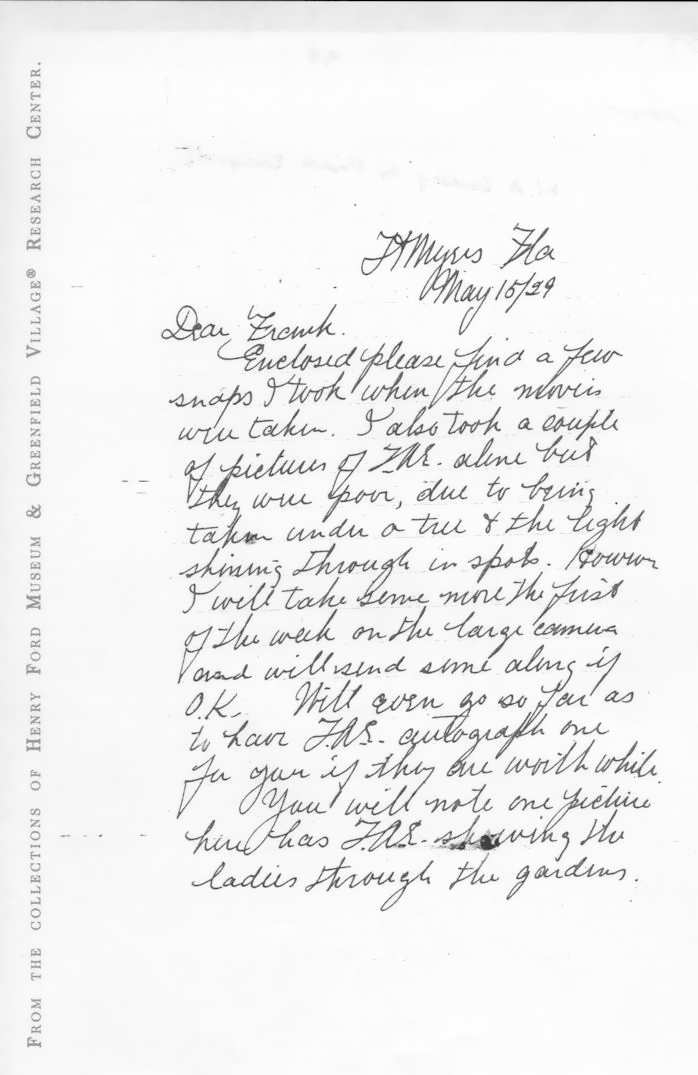 [X001A5AS], Letter from William Albert Benney to Frank Campsall, May 15th, 1929 1929-05-15
[X001A5AS], Letter from William Albert Benney to Frank Campsall, May 15th, 1929 1929-05-15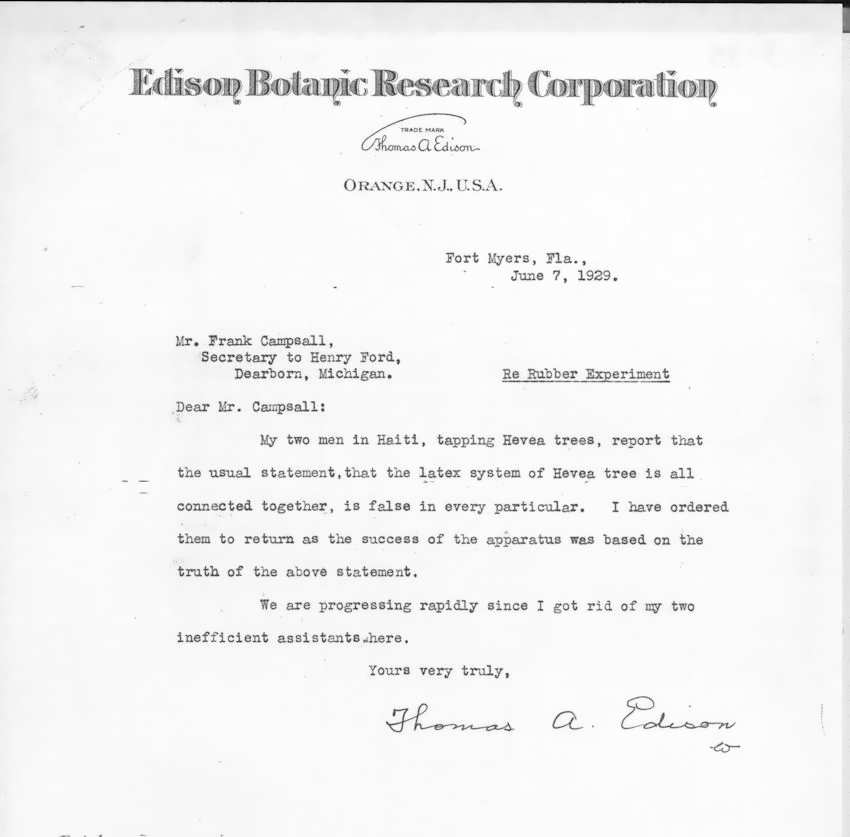 [X001A5AT], Letter from Thomas Alva Edison to Frank Campsall, June 7th, 1929 1929-06-07
[X001A5AT], Letter from Thomas Alva Edison to Frank Campsall, June 7th, 1929 1929-06-07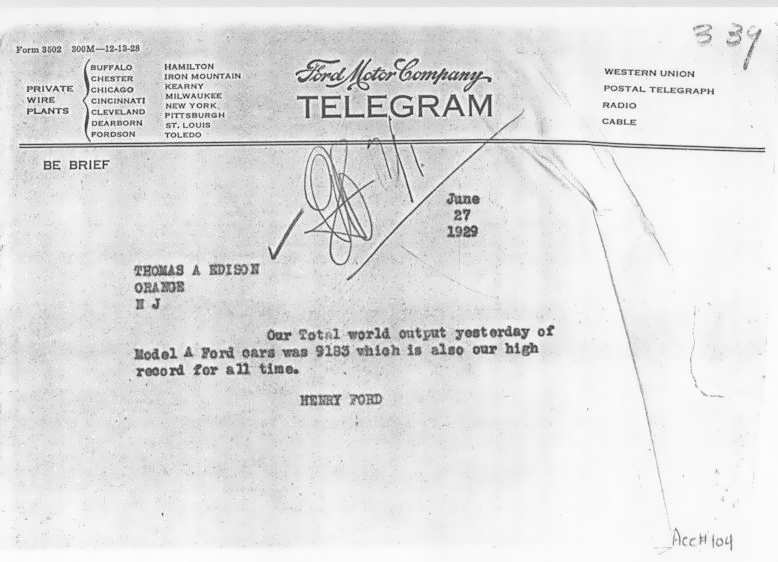 [X001A5AU], Telegram from Henry Ford to Thomas Alva Edison, June 27th, 1929 1929-06-27
[X001A5AU], Telegram from Henry Ford to Thomas Alva Edison, June 27th, 1929 1929-06-27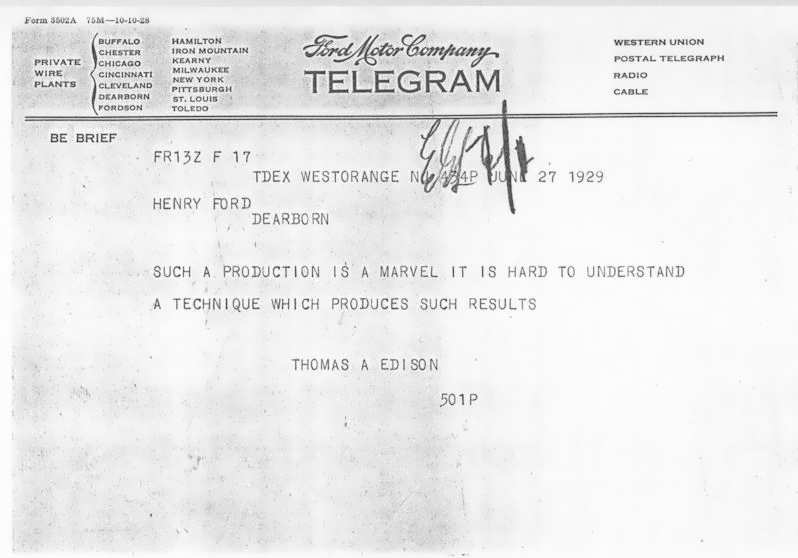 [X001A5AV], Telegram from Thomas Alva Edison to Henry Ford, June 27th, 1929 1929-06-27
[X001A5AV], Telegram from Thomas Alva Edison to Henry Ford, June 27th, 1929 1929-06-27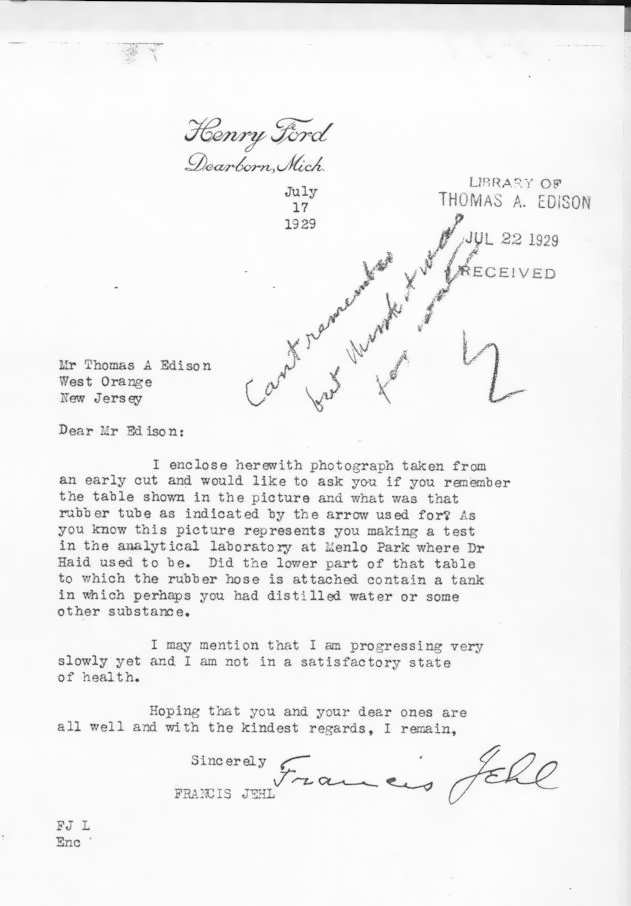 [X001A5AW], Letter from Francis Jehl to Thomas Alva Edison, July 17th, 1929 1929-07-17
[X001A5AW], Letter from Francis Jehl to Thomas Alva Edison, July 17th, 1929 1929-07-17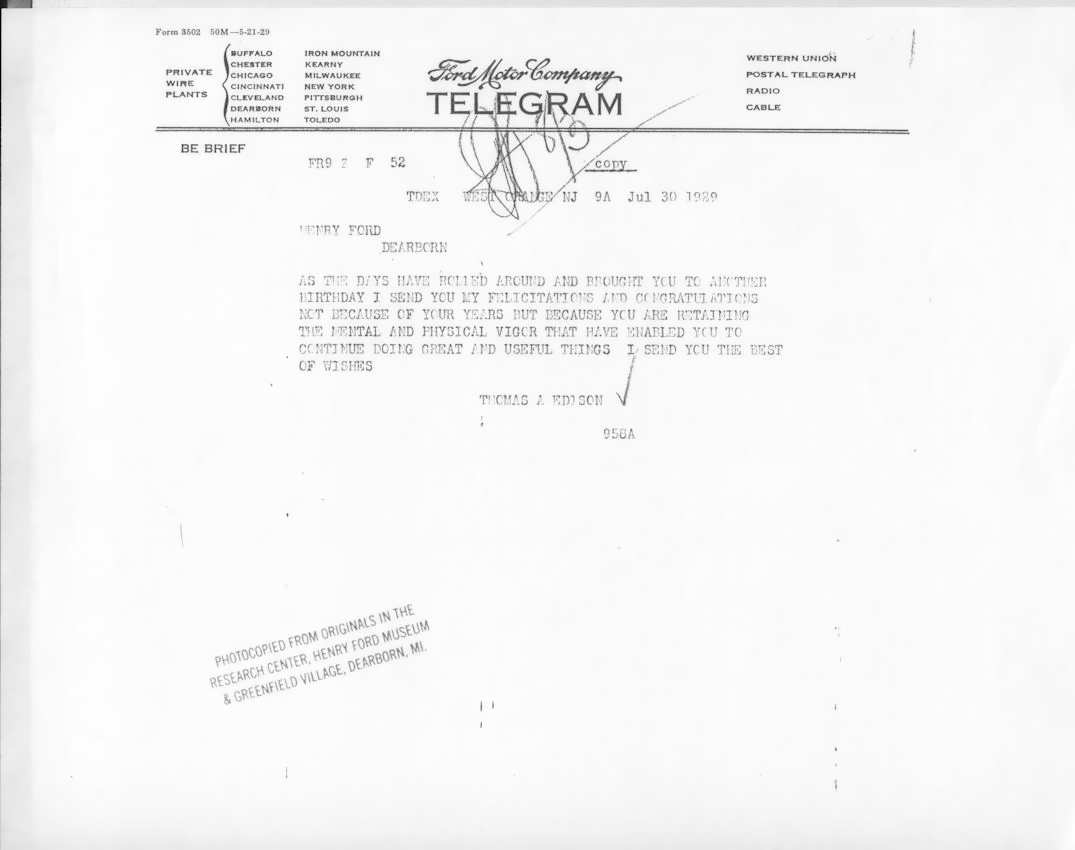 [X001A5AX], Telegram from Thomas Alva Edison to Henry Ford, July 30th, 1929 1929-07-30
[X001A5AX], Telegram from Thomas Alva Edison to Henry Ford, July 30th, 1929 1929-07-30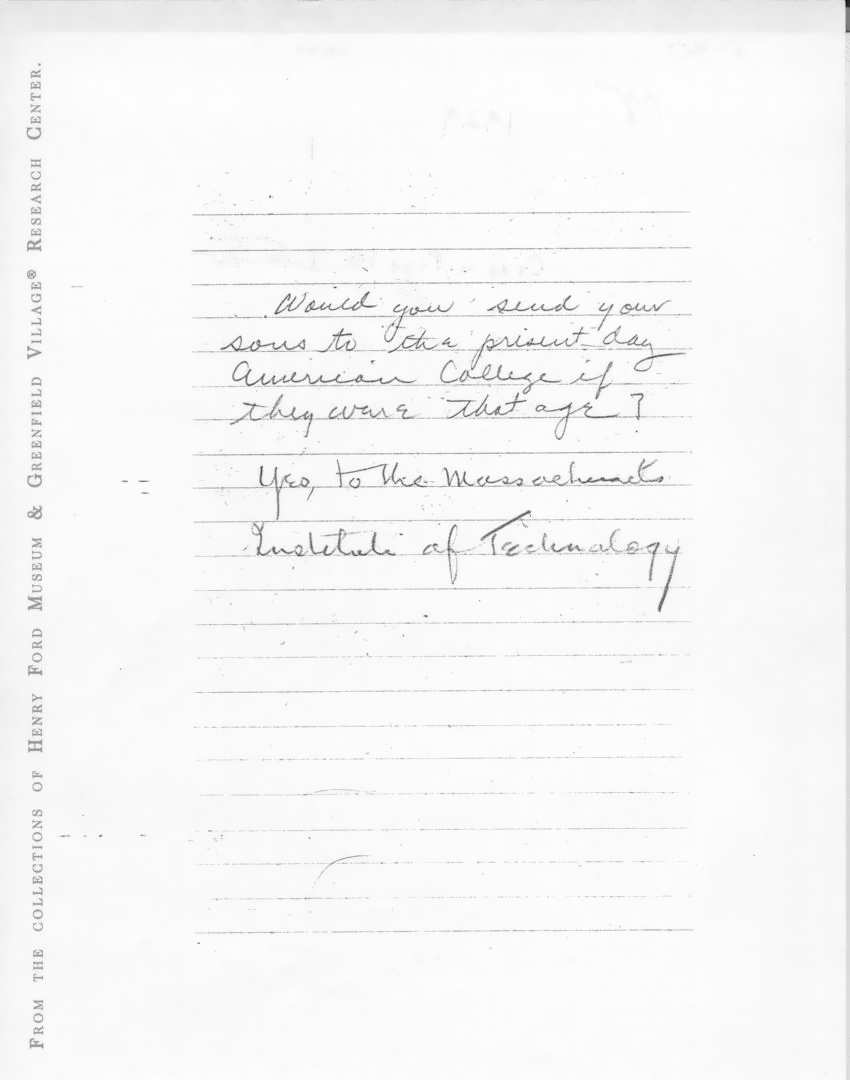 [X001A5AY], Interview, Thomas Alva Edison, February 11th, 1929 1929-02-11
[X001A5AY], Interview, Thomas Alva Edison, February 11th, 1929 1929-02-11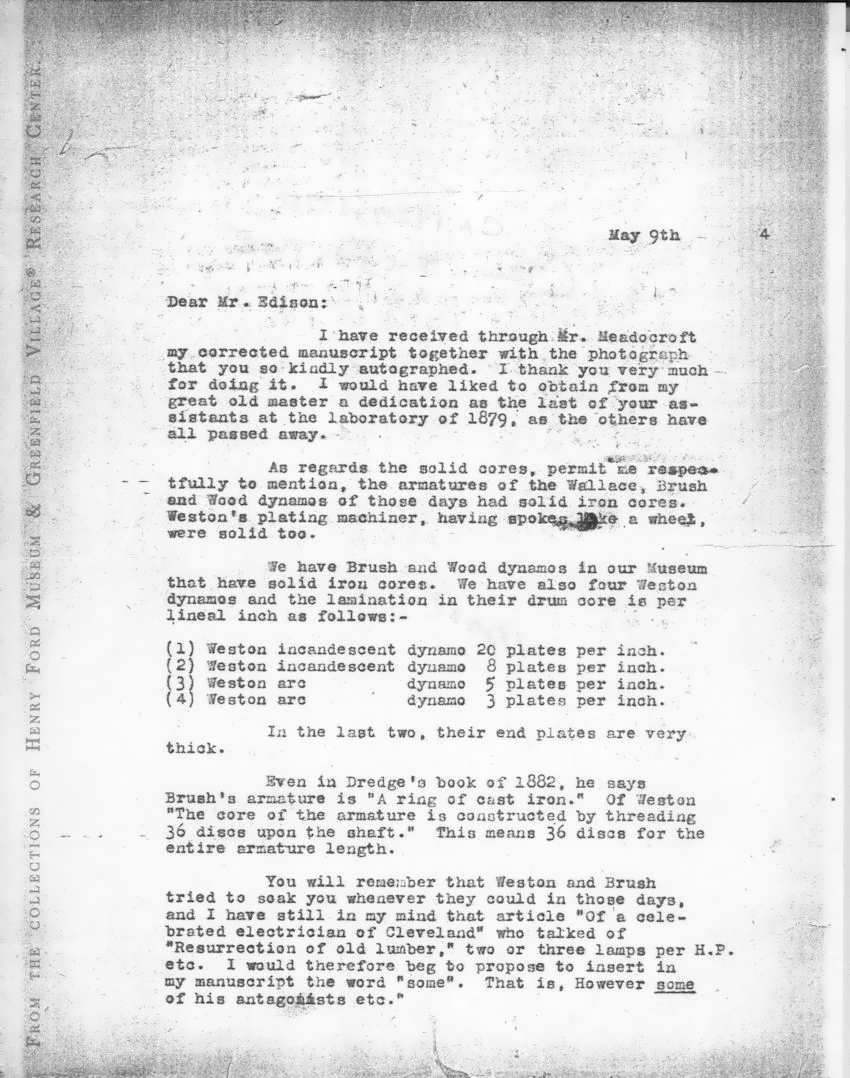 [X001A5AZ] Letter, 1929-1930 1929-1930
[X001A5AZ] Letter, 1929-1930 1929-1930 [X001A5BA], Reminiscence, James U MacKenzie, January 20th, 1930 1930-01-20
[X001A5BA], Reminiscence, James U MacKenzie, January 20th, 1930 1930-01-20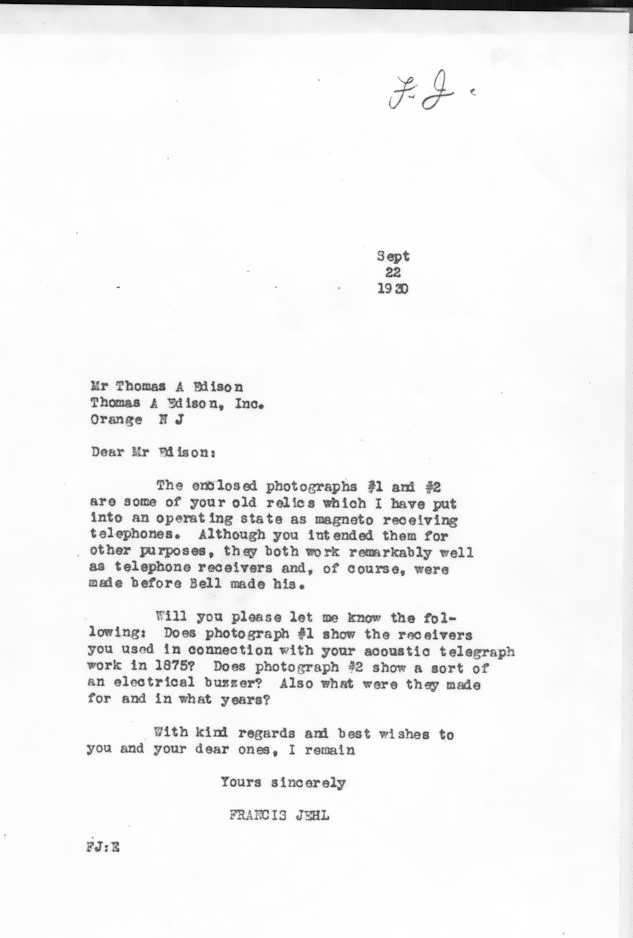 [X001A5BB], Letter from Francis Jehl to Thomas Alva Edison, September 22nd, 1930 1930-09-22
[X001A5BB], Letter from Francis Jehl to Thomas Alva Edison, September 22nd, 1930 1930-09-22 [X001A5BC], Telegram from Henry Ford to Thomas Alva Edison, October 21st, 1930 1930-10-21
[X001A5BC], Telegram from Henry Ford to Thomas Alva Edison, October 21st, 1930 1930-10-21 [X001A5BD], Letter from Francis Jehl to Thomas Alva Edison, November 12th, 1930 1930-11-12
[X001A5BD], Letter from Francis Jehl to Thomas Alva Edison, November 12th, 1930 1930-11-12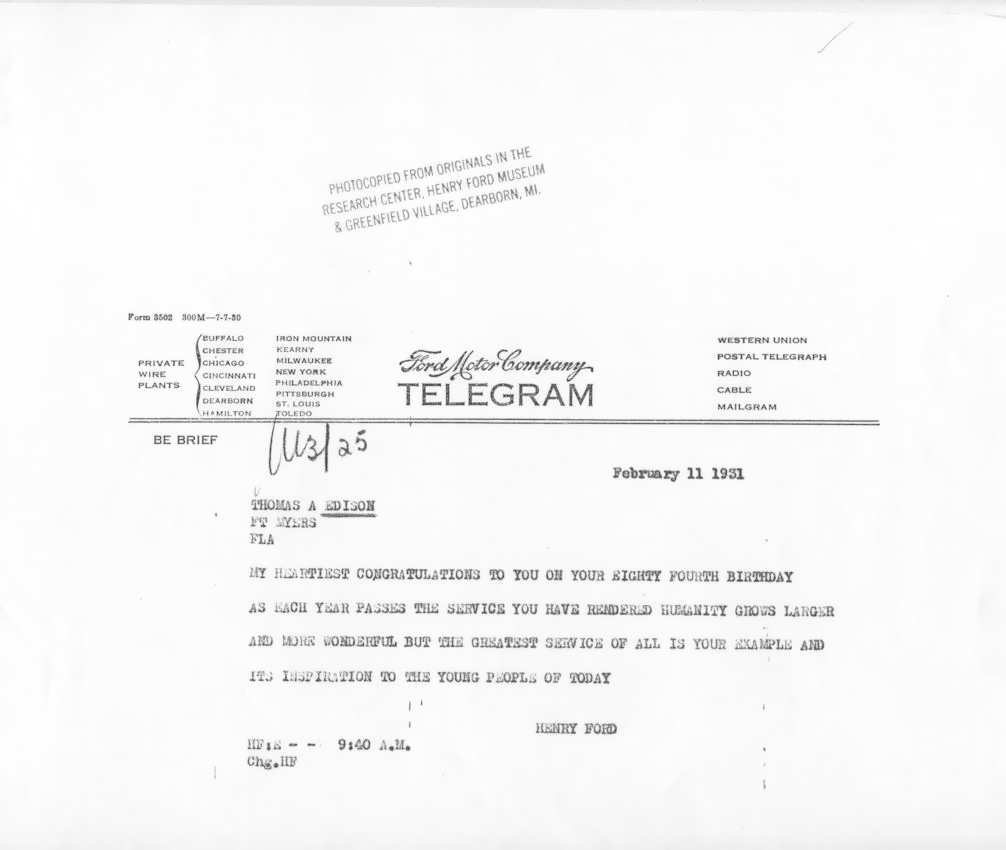 [X001A5BE], Telegram from Henry Ford to Thomas Alva Edison, February 11th, 1931 1931-02-11
[X001A5BE], Telegram from Henry Ford to Thomas Alva Edison, February 11th, 1931 1931-02-11 [X001A5BF], Letter from Clarence Andrus Little to William John Cameron, November 28th, 1937 1937-11-28
[X001A5BF], Letter from Clarence Andrus Little to William John Cameron, November 28th, 1937 1937-11-28 [X001A5BG], Interview, Thomas Alva Edison, 1928-1937 1928-1937
[X001A5BG], Interview, Thomas Alva Edison, 1928-1937 1928-1937